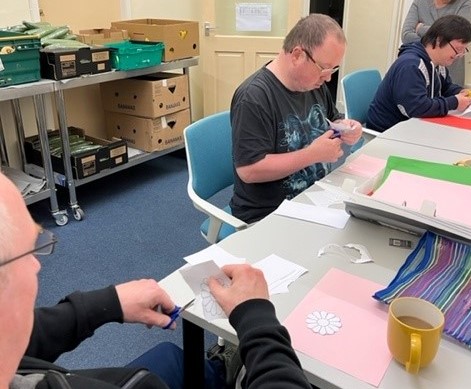Our CEO Lucy Davis answers the question as to why the Maths on Toast approach is beneficial for ALL learners and asks us to always look for ways to encourage and support different ways of thinking and learning. There is no one size fits all when it comes to learning.
We are often asked if Maths on Toast activities are suitable for children and families with SEND.
Our USP is our family-focused and creative maths approach – craft, colouring, construction, patterns, puzzles, games and challenges – offering fun, playful, approachable activities and resources for families with children aged 4 – 12 to explore and discover together.
We believe this approach is the starting point for a positive and ‘can-do’ attitude to maths for the whole family.
Why is it suitable for those with SEND?
- The first and most straightforward answer is because our activities are suitable for everyone to use. They are accessible and ‘open-ended’ meaning they can be explored to a level suitable to a child (or adult’s) ability or stage of learning.
- Exploring mathematical ideas with real ‘concrete’ objects is what we call active learning. This tactile, hands-on approach – using physical objects and visuals, exploring spatial maths (shape, space and measure), using ‘multisensory’ methods – to really investigate the idea, concept or problem helps all learners of all abilities and at all stages. It helps develop deeper understanding, helps us piece together the why.
- Our approach helps learners discover there is no one way of working something out. Supporting different ways of approaching a mathematical idea; giving everyone the opportunity to try things out in their own time and their own way; and encouraging the sharing of different approaches again supports deeper understanding. It also helps you discover how you learn best.
Our 5 key principles explain further what shapes the Maths on Toast approach and the key benefits.
No one ‘right’ way
There is a right and wrong answer in most maths problems. But there is no one set way of getting to that answer!
In life, there is very rarely only one way of doing something. We might know this is true for learning generally, but we often forget or have never been encouraged to realise that this also applies to maths!
Acknowledging that we can and should think ‘outside the box’ is both accepting of differences in learning and can be incredibly liberating. Building the confidence to try, make mistakes and do it your own way can be key in unlocking the learning potential of many children. This applies to adults too, especially those who were not given this opportunity in their learning experiences.
There are many different types of Special Educational Needs (SEN) including those who may have a learning disability, as well as those who are neurodiverse/divergent including with ASC and/or ADHD. Dyslexia and dyscalculia are Specific Learning Difficulties or Differences, often referred to as SpLD.
It’s important to stress that a formal identification of learning difference is not a prerequisite for approaching learning in different ways.
Most important is that different and varied approaches will make learning more accessible to all children, whether they have an SpLD/SEND need or not.
So, let’s start by helping everyone have the opportunity to slow down, explore and not be afraid of getting it wrong in maths. The younger we can do this the better. It’s time we stopped expecting everyone to learn in the same way, and started supporting everyone to discover how they learn best…
Top tips:
- Use ‘concrete’ objects to explore maths – blocks, counters, dots, pasta shapes, the list is endless Look for patterns and shapes and spot maths in your everyday life and daily activities
- Work things out together – everyone has a different way of doing something
- Don’t get fixated on ‘rote’ learning and memorising – for timestables, lay out objects and visuals to develop ‘number sense’ and deeper understanding of how the numbers all work together instead
- Don’t dictate when a child can and can’t use objects, visuals or ‘aids’ in their learning. Let them decide when they need them and when they don’t
Read our 5 Golden Rules for enjoying maths at home.

